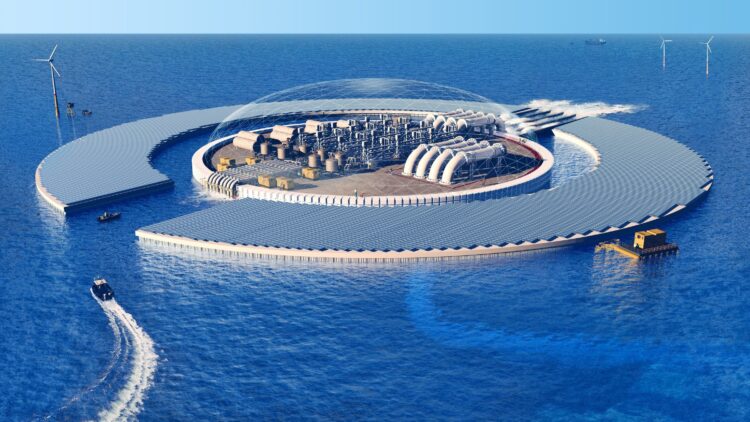Picture a device that fights global warming by physically removing carbon dioxide (CO2) from the air and disposing of it at the bottom of the sea. That is what Equatic, a start-up based in Los Angeles, is doing to set up the trend right now.
The new idea is to use seawater to capture CO2 for thousands of years and generate green hydrogen as a clean energy source. However, this revolutionary method raises concerns over its impact and applicability in large-scale environments.
The ocean as an ally in fighting climate change
The ocean has been warming responsibly for several decades; it retains over 93% of the extra heat that greenhouse gas emissions produce and a quarter of global CO2. Equatic’s approach relies on this natural ability, where a company uses electrochemical processes to capture CO2 and convert it to stable carbonates and bicarbonates within seawater. They can lock in carbon for thousands to millions of years, the time scale that might be needed to address climate change. This works in sequence with this natural process that has been raising concerns about the level of the sea and the extent of the world’s climate.
The process starts by passing through an electrolyzer channel to generate green hydrogen and capture CO2 from seawater through renewable energy. The CO2 is converted to solids or dissolved solution forms and then safely returned to the ocean after the waste is neutralized. In Equatic’s words, this method causes negligible interference with ocean chemistry and does not lead to ocean acidification.
However, opponents argue that messing with this scale’s ocean ecosystems could have unpredictable effects. Fluctuations in nutrient concentrations and species distribution may affect marine ecosystems and the food web.
Turning the tide: green hydrogen’s role in decarbonization
Apart from CO2 capture, Equatic technology produces green hydrogen that will be essential in addressing the emission challenges of aviation, marine, and manufacturing sectors. Hydrogen production supports their carbon capture and storage plans, thus developing a profitable way of expanding the technology.
Green hydrogen offers a dual benefit: it reduces dependency on fossil fuels and serves as an energy storage medium, balancing intermittent renewable sources like wind and solar. Aquatic has already signed agreements with major corporations like Boeing, showcasing confidence in the potential of carbon-negative hydrogen.
Despite these advantages, scaling production remains challenging. The process requires significant energy and natural resources, raising questions about sustainability and cost-effectiveness. Nevertheless, proponents argue that innovation and market incentives could bring costs down over time, making it a competitive solution by the 2030s.
Risks and rewards: balancing innovation with caution
Equatic’s goal is pretty noble, albeit ambitious; applying this technology globally to tackle emissions is questionable. According to several scientists, large-scale ocean carbon removal is said to have adverse impacts on marine life and the food chain. The critics also suggest that carbon removal efforts might overshadow emissions reduction.
Equatic, on the other hand, focuses on intensive environmental assessment and compliance with legal requirements. They can be easily deployed as modular systems that minimize potential adverse environmental effects. Furthermore, collaborations with relevant research organizations enhance the efficiency of various processes and increase clarity in assessing CO2 removal efficiency.
If global interest rises, Equatic’s method could be critical to the more extensive approach to tackling climate change. However, a careful and relatively informed approach will be required to make the process sustainable and non-detrimental to the ocean life.
Equatic’s ocean-based technology is a radical solution to climate change that integrates CO2 capture with green hydrogen generation. On the one hand, the opportunities for the company and the entire industry are immense; on the other hand, the risks and difficulties of such a project are also very significant.
While the world wakes up to the need for climate change action, such approaches present a window of possibility – but they should be done right, with conservation of the environment and science as the guiding principles, as there have been adverse climatic conditions that have been felt due to climatic changes. It might be that the world’s most prominent and unknown landscape is the answer to man’s battle against global warming.

